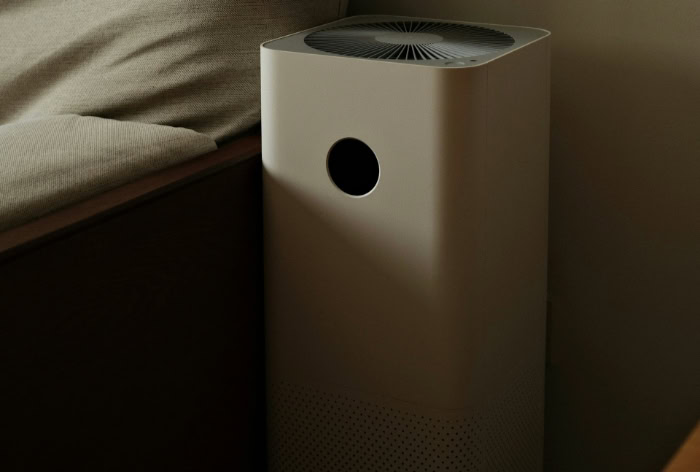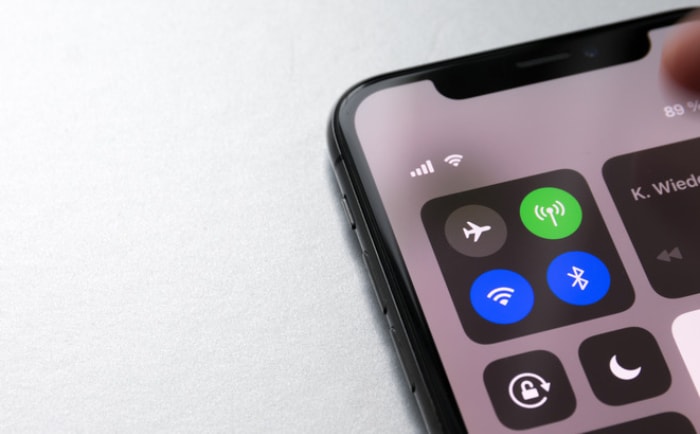What Is an Air Purifier and How Does It Work?

The air inside your home often contains more pollutants than the air outside. From common dust and pet dander to invisible chemical vapors, your indoor environment is filled with contaminants that can affect your well-being.
Air purifiers promise a solution, designed to filter out these unwanted particles and deliver cleaner, fresher air. But not all purifiers are created equal.
Some rely on high-efficiency filters to trap allergens, while others use activated carbon for odors and gases. Certain technologies even introduce new risks, such as ozone.
Making an informed choice requires knowing how these devices operate, what they can realistically achieve, and how to maintain them for safe, effective performance.
What Is an Air Purifier?
An air purifier is an appliance that improves indoor air quality by removing airborne contaminants from a room. Unlike a simple fan that only circulates air, a purifier draws air through an internal filtration system to capture pollutants before releasing cleaner air back into the space.
The device's primary function is to reduce the concentration of particles and gases, creating a healthier breathing environment within homes, offices, and other indoor settings.
Definition and Purpose
An air purifier is a device specifically designed to sanitize the air within an occupied space. Its purpose is to filter out and trap a variety of airborne pollutants, such as dust, pollen, pet dander, smoke, and mold spores.
By continuously cycling room air through its filters, the purifier lowers the quantity of these irritants. This process helps to alleviate allergy symptoms, reduce odors, and generally improve the quality of the air you breathe indoors.
Core Components
Most air purifiers operate with three essential components: a fan, one or more filters, and a housing unit. The fan or motor is responsible for pulling ambient air into the device and pushing it out after filtration.
The filters are the central element, physically capturing particles or adsorbing gases as air passes through them. The housing encloses these parts, directs the airflow properly through the filter media, and protects the internal mechanics.
Together, these components work to efficiently move and clean the air.
Common Form Factors
Air purifiers are available in various sizes and configurations to suit different needs. The most prevalent type is the portable room unit, a compact and self-contained device intended for a single room like a bedroom or living area.
For larger open-plan spaces, more substantial console models offer greater power and coverage. At the high end, whole-house systems are designed to integrate directly with a building's heating, ventilation, and air conditioning (HVAC) system, providing filtered air to every room simultaneously.
How Air Purifiers Work

An air purifier functions by continuously moving air through a filtration system. A powerful internal fan creates a cycle, drawing in contaminated air from the room and forcing it through one or more filters.
After the air is cleaned, it is released back into the room, gradually lowering the overall concentration of airborne pollutants. The effectiveness of this process depends on both the power of the fan and the efficiency of the filters.
Airflow Path
The journey of air through a purifier follows a specific path. It begins when the fan pulls surrounding room air into the unit through an intake vent.
The air is then channeled directly through a series of filters, often starting with a pre-filter for larger debris and moving to finer filters for smaller particles. Once it has passed through all the filter stages, the purified air is expelled back into the room through an outlet vent.
This continuous circulation is essential for the device to process the entire volume of air in a space over time.
Filtration Mechanisms
Mechanical filters capture particles from the air using a dense matrix of fibers. The process relies on three main physical principles: impaction, interception, and diffusion.
Impaction works on large, heavy particles that are unable to change direction with the airflow and crash directly into a fiber. Interception occurs when medium-sized particles follow the airflow but pass close enough to a fiber to get stuck.
Diffusion affects the smallest particles, which move erratically and collide with fibers as they travel. This combination of methods allows the filter to trap a wide range of particle sizes.
Performance Indicators
Two critical factors determine an air purifier's effectiveness: efficient filtration and sufficient airflow. A high-quality filter is useless if air cannot move through it quickly, and a powerful fan is ineffective if the filter does not capture pollutants.
The most common metric for performance is the Clean Air Delivery Rate (CADR), which measures the volume of filtered air a purifier can produce. Additionally, the unit’s design must prevent air from leaking around the filters, a problem known as bypass.
A well-sealed system ensures that virtually all the air pulled in by the fan is forced through the filter media.
Filtration Technologies and Add-On Features
Air purifiers employ a range of technologies, often combining several methods to target different types of pollutants. The foundation of most effective purifiers is a mechanical filter designed to capture solid particles.
Many units also include special media for adsorbing gases and odors. Beyond basic filtration, some models incorporate electronic add-ons intended to neutralize microbes or charge particles, though these features require careful consideration due to potential side effects.
HEPA Filtration
High-Efficiency Particulate Air (HEPA) filtration is the industry standard for removing airborne particles. A true HEPA filter is a dense, mechanical screen made of fine fibers, certified to capture at least 99.97% of particles that are 0.3 microns in size.
This specific size is a benchmark because it is one of the most difficult for filters to trap. In practice, HEPA filters are highly effective at removing common allergens like dust, pollen, pet dander, and mold spores, as well as fine smoke particles.
For medical or other highly sensitive settings, even higher grades of filtration are available.
Activated Carbon Filters
While HEPA filters excel at capturing particles, they are ineffective against gases, chemicals, and odors. To address this, many air purifiers incorporate an activated carbon filter.
Activated carbon is treated to be extremely porous, creating a vast surface area that adsorbs gas and odor molecules. This process effectively removes volatile organic compounds (VOCs) from sources like paint or cleaning supplies, cooking smells, pet odors, and tobacco smoke.
The amount and quality of the carbon in a filter determine how well it works and how long it lasts before becoming saturated.
UVGI, Ionizers, and PCO
Some air purifiers include technologies designed to actively neutralize or alter pollutants.
- Ultraviolet Germicidal Irradiation (UVGI) uses UV-C light to destroy the DNA of airborne microorganisms like bacteria and viruses. Its effectiveness depends on the microbe's exposure time and the light's intensity.
- Ionizers release negatively charged ions into the air. These ions attach to airborne particles, making them heavier and causing them to fall onto surfaces or clump together for easier capture.
- Photocatalytic Oxidation (PCO) uses UV light and a catalyst to create powerful oxidizing agents that break down gaseous pollutants.
It is important to evaluate these technologies carefully. Some ionizers and PCO systems can produce ozone as a harmful byproduct, which is a known lung irritant.
Consumers should look for models that are certified not to produce ozone or verify the safety claims of the manufacturer.
Pollutant Removal and Device Limitations

Air purifiers are designed to target specific types of indoor air pollution, and their effectiveness depends entirely on the technology they employ. While they excel at capturing certain contaminants, they are not a universal solution for all air quality issues.
Knowing what a purifier can and cannot remove is essential for matching the right device to your needs and setting appropriate expectations for its performance.
Airborne Particulates
The primary function of air purifiers with mechanical filters, such as HEPA filters, is to capture solid airborne particles. They are highly efficient at removing common allergens and irritants from the air.
The main targets for this type of filtration include dust mites, pollen, pet dander, and mold spores. Additionally, these filters are very effective at capturing fine particulate matter known as PM2.5, which includes tiny particles from smoke, smog, and vehicle exhaust that can penetrate deep into the lungs.
Gases and Odors
Mechanical filters are not capable of removing gaseous pollutants, chemicals, or odors. For these contaminants, a purifier must include a substantial amount of activated carbon.
A carbon filter works through a process called adsorption, where gas molecules chemically bond to the surface of the carbon. This makes it effective against volatile organic compounds (VOCs) released from paint, furniture, and cleaning products, as well as unpleasant smells from cooking, pets, or tobacco.
A purifier that only has a particle filter will not be effective at resolving issues with smells or chemical vapors.
Setting Realistic Expectations
An air purifier should be viewed as a supplement to, not a replacement for, other essential clean air strategies. The two most important methods for maintaining good indoor air quality are controlling the source of pollution and ensuring adequate ventilation.
For example, a purifier can help reduce mold spores, but it cannot fix the moisture problem causing the mold to grow. Similarly, it cannot substitute for opening windows to bring in fresh air.
The device's real-world effectiveness also depends heavily on selecting the correct size for your room, placing it where it can circulate air freely, and choosing the right filtration technology for the pollutants you want to remove.
Selection, Placement, and Maintenance
Choosing the right air purifier and using it correctly are just as important as the technology inside it. To get the full benefit from your device, you must select a model appropriate for your space, position it for optimal airflow, and commit to regular upkeep.
These practical steps ensure the purifier operates efficiently and safely throughout its lifespan.
Proper Sizing and Placement
An air purifier's performance is directly tied to its ability to process the volume of air in a specific room. Manufacturers typically recommend a room size, but a more precise metric is the Clean Air Delivery Rate (CADR).
This rating indicates how quickly the purifier can clean a room of a particular size. You should choose a model with a CADR that corresponds to your room's dimensions.
Once you have the right unit, placement is critical. For best results, position the purifier in an open area away from walls, furniture, and corners.
Obstructed airflow will severely limit its ability to draw in and circulate air throughout the room.
Ongoing Maintenance and Costs
Air purifiers require regular maintenance to remain effective. The filters collect pollutants over time and eventually become clogged, which reduces airflow and diminishes cleaning performance.
Most models have a filter replacement indicator, but you should also consult the manufacturer's guidelines for recommended replacement intervals. Filters for different pollutants, like carbon and HEPA, may have different lifespans.
The cost of replacement filters is an important ongoing expense to consider when purchasing a unit. Neglecting to change filters makes the purifier ineffective and can reduce its operational safety.
Prioritizing Safety
When selecting an air purifier, safety should be a top concern. The most significant risk comes from models that intentionally generate ozone, a known respiratory irritant that can be harmful to your health.
Avoid any device marketed as an “ionizer” or “oxidizer” that does not explicitly state it is ozone-free. It is best to choose purifiers from reputable, established manufacturers that provide clear documentation on their technology and safety certifications.
Trustworthy brands will have their products tested by third-party organizations and will be transparent about their performance claims and potential byproducts.
Conclusion
An air purifier can be a powerful tool for improving the air you breathe at home. By drawing air through specialized filters, it effectively reduces common particles like dust and pollen, and with the addition of activated carbon, it can also tackle odors and chemical gases.
The result is a fresher, cleaner indoor environment. However, its benefits are only realized through careful consideration and proper use.
Selecting a model with the appropriate technology for your specific concerns, matching its cleaning power to your room's size, and placing it for unobstructed airflow are all critical steps. Just as important are consistent maintenance, especially regular filter changes, and choosing a device from a trusted brand that does not produce harmful byproducts like ozone.
When these factors are addressed, an air purifier becomes a valuable component of a healthy living space.


